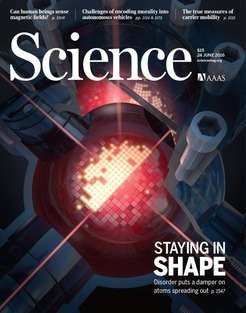Finding evidence of many-body localization in a closed quantum system.
During equilibration ordinary many-body systems lose all information about the initial state. Every morning we experience an example for this behaviour. Milk poured into a cup of coffee mixes perfectly and after some time it is impossible to say how exactly the two fluids were put together. The same behaviour holds for almost all quantum systems. However, recently a new phenomenon called “many-body localization” has been predicted theoretically, which allows well insulated quantum systems to preserve memory of the initial state forever. Now a team of scientists around Dr. Christian Groß and Professor Immanuel Bloch (Director at MPQ and Chair of Quantum Optics at LMU Munich), in cooperation with David Huse (Princeton University), has obtained evidence of such a behaviour in a two-dimensional quantum system of cold rubidium atoms trapped in an optical lattice.
The scientists observed that – beyond a certain degree of disorder imprinted on the particle ensemble in the beginning – the system would relax into a steady state still containing detailed microscopic information about its past. “We were able to observe the transition from a thermalized state into a many-body localized phase”, Christian Groß points out. “It is the first observation of that kind in a regime that is not accessible with state-of-the-art simulations on classical computers.” The experiment is not only of fundamental interest; the results might also lead to new ways for storing quantum information.
Motivated by the foundational problem of how interacting particles behave in a disordered system, in the 1950s the American physicist Philip Warren Anderson discovered the famous localization phenomenon for non-interacting particles, now called “Anderson localization”. Here, disorder prevents the particles to move and consequently all transport is stopped. But what happens when disorder comes together with interactions? Will interactions lead to transport and thermalization, or will the localization persist even at high energies? So far, there is no theoretical model that faithfully predicts the evolution of a closed quantum system in more than one dimension under these conditions, although, the possibility for localization has been theoretically suggested.
